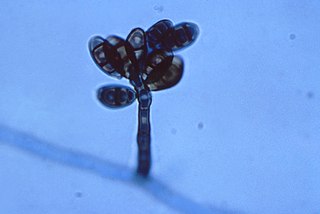
Curvularia is a hyphomycete (mold) fungus which is a facultative pathogen, or beneficial partner of many plant species and common in soil. Most Curvularia are found in tropical regions, though a few are found in temperate zones.

Nail-tail wallaby refers to Onychogalea, a genus describing three species of macropods, all of which are found in Australia. Related to kangaroos and wallabies, they are smaller sized species distinguished by a horny spur at the end of their tail. The northern nail-tail wallaby is still common in the northern part of Australia, the crescent nail-tail is now extinct, and the bridled nail-tail is considered rare and endangered, with probably fewer than 1100 mature individuals in the wild. Nail-tail wallabies are smaller than many other wallabies.

Stomorhina lunata is a species of fly in the family Rhiniidae first described by Johan Christian Fabricius in 1805.

Ostrinia is a genus of moths in the family Crambidae described by Jacob Hübner in 1825. Several of them, including the European corn borer, are agricultural pests.
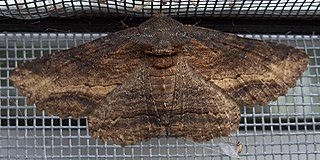
Zale lunata, the lunate zale, is a moth of the family Erebidae. The species was first described by Dru Drury in 1773. It is found throughout the east and west of North America. The wingspan is 40–55 mm. The moth flies from March to September depending on the location. The larvae feed on various deciduous trees, such as maple, willow and Prunus.
Calligrapha lunata, the moon-marked leaf beetle, is a species of leaf beetle in the family Chrysomelidae. It is found in North America.
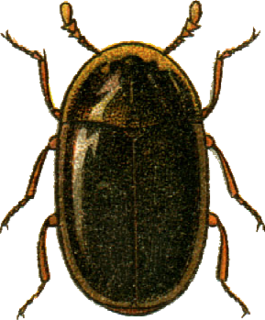
Clypastraea is a genus of minute hooded beetles in the family Corylophidae. There are more than 20 described species in Clypastraea.
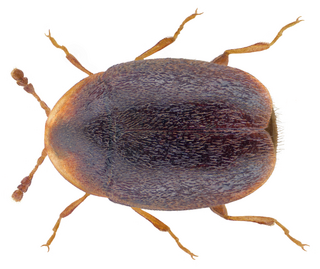
Parmulini is a tribe of minute hooded beetles in the family Corylophidae. There are at least 2 genera and more than 40 described species in Parmulini.
Heterocampa lunata is a species of moth in the family Notodontidae. It was first described by Henry Edwards in 1884 and it is found in North America.
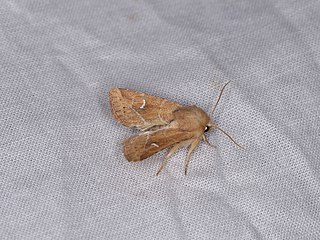
Amphipoea lunata is a species of moth in the family Noctuidae first described by Smith in 1891. It is found in North America.

Mozena is a genus of leaf-footed bugs in the family Coreidae. There are more than 30 described species in Mozena.
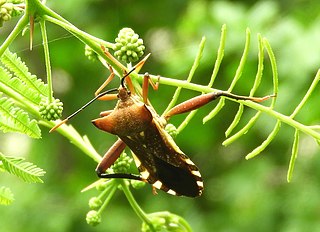
Mozena lunata is a species of leaf-footed bug in the family Coreidae. It is found in Central America and North America.
Notonecta lunata is a species of backswimmer in the family Notonectidae. It is found in North America.
Pseudachorutes is a genus of springtails in the family Neanuridae. There are more than 50 described species in Pseudachorutes.
Clypastraea lepida is a species of minute hooded beetle in the family Corylophidae. It is found in North America.
Clypastraea fasciata is a species of minute hooded beetle in the family Corylophidae. It is found in North America.
Clypastraea biguttata is a species of minute hooded beetle in the family Corylophidae. It is found in North America.
Clypastraea lugubris is a species of minute hooded beetle in the family Corylophidae. It is found in North America.

Acacia lunata, commonly known as lunate-leaved acacia, is a shrub of the genus Acacia and the subgenus Phyllodineae that is endemic to eastern Australia.
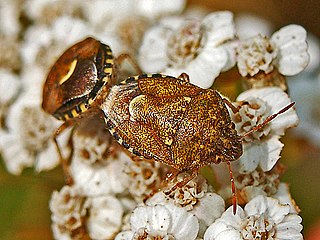
Staria lunata is a species of shield bug belonging to the family Pentatomidae. It is the only species of the genus











